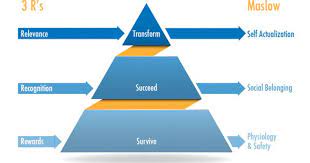In today’s highly competitive market, businesses are constantly seeking ways to retain customers and foster long-term relationships. One effective strategy that has gained significant traction is the implementation of brand loyalty programs. These programs aim to incentivize repeat purchases and cultivate a sense of allegiance among consumers. However, behind the surface-level rewards and perks lies a complex interplay of psychological factors that influence customer behavior and decision-making.
Understanding Consumer Behavior
Consumer behavior is driven by a multitude of factors, including psychological, social, and environmental influences. Individuals are often guided by their emotions when making purchasing decisions, seeking products or services that fulfill their needs while also resonating with their values and identity.
Creating Emotional Connections
Building emotional connections with customers is paramount for fostering brand loyalty. Loyalty programs that evoke positive emotions such as joy, gratitude, and belonging are more likely to resonate with participants on a deeper level, thereby increasing their propensity to remain loyal to the brand.
Cognitive Bias and Decision Making
Cognitive biases play a significant role in shaping consumer behavior and perception. From the anchoring effect to confirmation bias, these biases can influence how individuals perceive and interact with loyalty programs, affecting their likelihood of participation and engagement.
Reward Systems and Gratification
The effectiveness of loyalty programs often hinges on the types of rewards offered and the perceived value they provide to participants. Whether it’s discounts, freebies, or exclusive access, rewards serve as a form of gratification that reinforces desired behaviors and strengthens the bond between the consumer and the brand.
Social Proof and Influence
Social proof, or the tendency to rely on the actions and opinions of others when making decisions, can significantly impact the success of loyalty programs. By showcasing testimonials, user-generated content, and social media endorsements, brands can leverage the power of social influence to amplify the effectiveness of their programs.
Brand Identity and Trust
Loyalty programs are an extension of a brand’s identity and values, serving as a tangible expression of its commitment to customer satisfaction and loyalty. By consistently delivering on promises and building trust with consumers, brands can solidify their position in the market and cultivate a loyal customer base.
Personalization and Customization
Personalization is key to delivering relevant and meaningful experiences to consumers. By leveraging data analytics and consumer insights, brands can tailor their loyalty programs to align with individual preferences and behaviors, thereby increasing engagement and retention rates.
The Role of Gamification
Integrating gamification elements into loyalty programs can enhance user engagement and motivation. By incorporating game-like mechanics such as points, levels, and challenges, brands can tap into the innate human desire for achievement and competition, driving participation and loyalty.
Challenges and Pitfalls
While loyalty programs offer numerous benefits, they also present challenges and pitfalls that brands must navigate. From consumer fatigue to program saturation, understanding and addressing these obstacles is crucial for maintaining program effectiveness and relevance.
Case Studies and Examples
Examining successful brand loyalty programs can provide valuable insights into what works and what doesn’t in the realm of loyalty marketing. From Starbucks’ highly personalized rewards program to Sephora’s tiered membership system, there are ample examples of brands effectively leveraging psychology to drive customer loyalty.
Measuring Success
Measuring the success of a loyalty program requires careful evaluation of key metrics such as customer retention, engagement levels, and lifetime value. By tracking and analyzing these metrics over time, brands can assess the effectiveness of their programs and identify areas for improvement.
Future Trends
As technology continues to evolve, so too will the landscape of brand loyalty programs. From AI-powered personalization to blockchain-based rewards systems, the future holds endless possibilities for innovation in loyalty marketing. By staying ahead of the curve and embracing emerging trends, brands can future-proof their loyalty initiatives and stay competitive in an ever-changing market.
Conclusion
In conclusion, the psychology of brand loyalty programs is a multifaceted topic that encompasses a wide range of psychological principles and behavioral dynamics. By understanding the underlying drivers of consumer behavior and leveraging this knowledge to design and implement effective loyalty programs, brands can cultivate strong, lasting relationships with their customers and drive long-term success.

